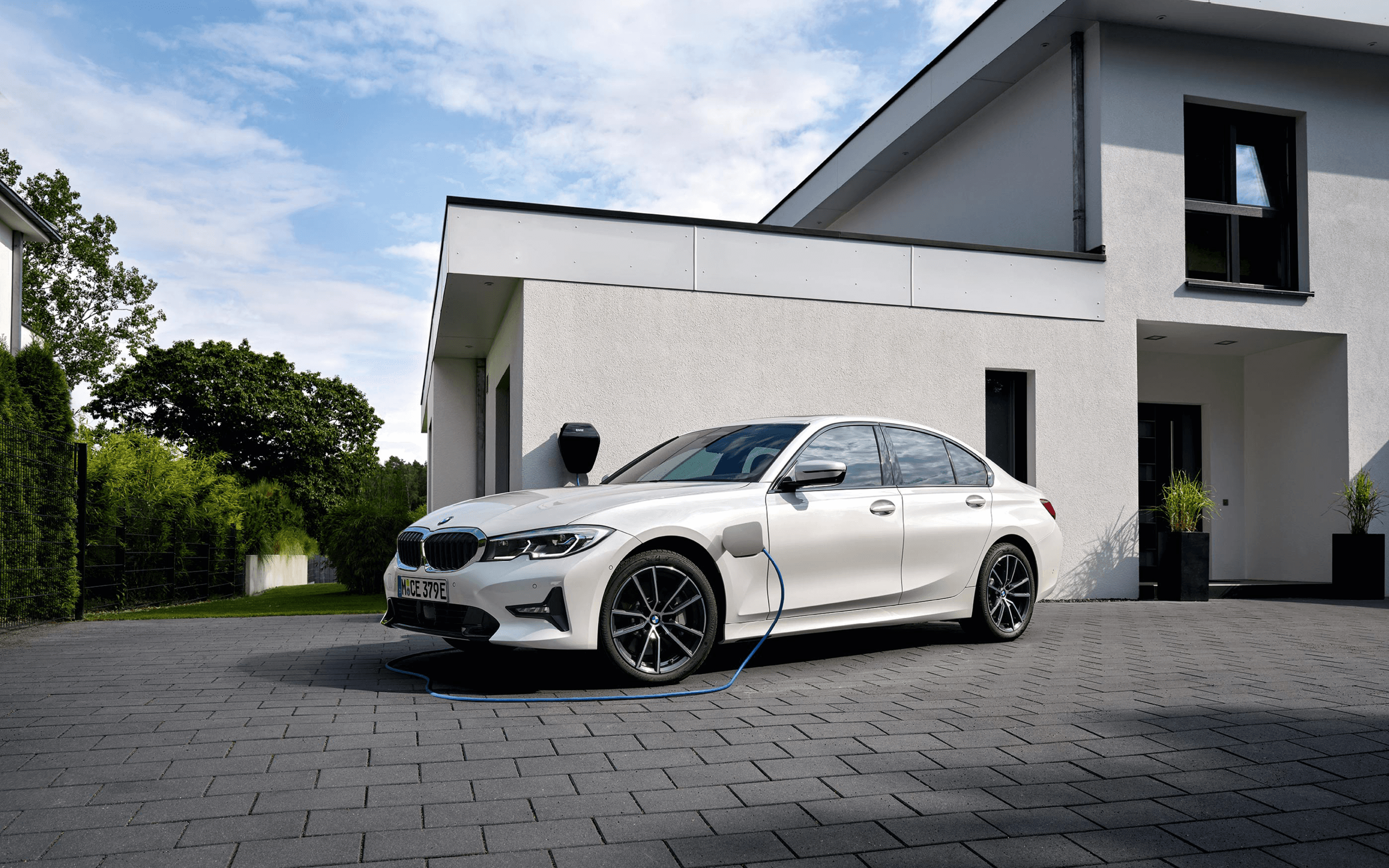
Frequently asked questions about charging at home
Charging at home
The VREG (Flemish Electricity and Gas Market Regulator) introduced a new notification requirement for charging stations for electric cars in June 2021. All charging stations you connect to the low-voltage grid with a charging capacity ≥ 5 kVA must be notified to Fluvius. This obligation applies to both public and private charging stations. The information Fluvius receives, will allow them to make targeted adjustments to the electricity distribution network.
This is or will also be an obligation in the other parts of the country in the near future:
- Flanders: Fluvius
- Brussels Capital Region: Sibelga (In Brussels, there is no notification obligation yet - 17/01/2023)
- Wallonia (75% coverage): ORES
- Province of Liège: Resa
There are also AIEG, AIESH and REW which are grid operators in the remaining Walloon municipalities. In this case, it is best to contact your distribution system operator directly to discuss the necessary steps.
- With a charging station
A charging station installed at your home allows you to charge both your EV and PHEV.
- With a SmartCable
Only a PHEV can be charged at home with a SmartCable via a standard socket. A PHEV does not necessarily require a home charging station.
No. Designed for home charging only, the SmartCable records the power flowing to your vehicle. The reimbursement of home energy consumption will be made on this basis of data. PLEASE NOTE: A SmartCable shall only be used at home. The reimbursement of energy consumption is linked to the IBAN and EAN code of the electricity meter of the specified home address. If a SmartCable is used, a charging card will only be required for public charging or activating a charging station on the company premises (depending on the set-up and the agreements made in this regard with the company).
(1) Order your electric car. (2) Please complete your contact details via a link provided by our charging infrastructure partner. (3) You will receive a questionnaire from our partner, with which you can chart the status of your electrical system. This can be completed by you, possibly with the help of our partner. (4) If step 3 does not provide sufficient clarity, our partner will schedule another physical inspection. (5) Our charging infrastructure partner will provide a final quotation for installation. After approval by your employer, Alphabet will order the car from the dealer and the charging point from our charging infrastructure partner. (6) Our charging infrastructure partner will plan the installation of the home charging station, two to four weeks before the scheduled delivery date of your electric car.
Before installing a home charging station, a questionnaire is sent out, and if necessary, an inspection is carried out. This will show whether your electrical system is adequate or not. If changes need to be made, either consult your network manager or your electrician – depending on the nature of the changes.
Some personal data such as your address, bank account number for the reimbursement and the EAN code of your electricity meter. To install a home charging station, three parties must agree to it: (1) The owner of the property where the home charging station is to be installed, because alterations will be made to that property. The home charging station will also become the property of the owner of the property “due to intended use”. (2) The electricity contractor: the person who has an agreement with a supplier of the premises for the electricity used on the premises. He/she pays the supplier for the amount used and is reimbursed for this by our charging infrastructure partner. (3) The driver: the end user of the home charging station.
The home charging station will be installed as close as possible to the vehicle’s delivery date. Our target date is between a month before delivery and the day before delivery. This is usually 2 to 4 weeks prior to the delivery of the new car.
Only to the home charging station. If there is no (or no longer) any valid electrical inspection certification for the rest of the house, it is up to the owner to provide general inspection certification of the electricity grid.
The home charging stations that Alphabet have installed are designed to be located outside. They can also be installed indoors, although it now appears that some fire-fighting zones no longer approve the installation of home charging stations indoors due to accessibility in the event of a fire. According to the providers, however, it is completely safe to install a home charging station indoors, and they are trying to get the regulators to take a clear stance on this.
No. The inspector for the charger installation has no role in this. The network administrator will offer to install a digital meter. When an increase on your installation from single-phase to three-phase is required, the network administrator might use that opportunity to replace your analogue meter.
No. The existing supplier invoices the total use of the family home to the family. By using a smart home charging station, the charging point operator can detect how much power is used for charging the car. This energy consumption is reimbursed monthly to the household at a fixed kWh price by the charging point operator. This is separate from whomever the home’s energy supplier is. On the other hand, the charging point operator ensures that the consumption for charging the car is charged to the employer via the lease contract or the charging card agreement.
Your smart home charging station records the kWh flowing to your vehicle. Based on this record, the charging point operator will refund a fixed amount per kWh directly to you each month. You still pay your energy supplier, but you recover the part for charging your vehicle. We do recommend having your monthly instalments increased to avoid surprises in your final bill. The amount that our partner reimburses to you will be charged to your employer via the lease contract.
As of 01/01/2022, you must enter your actual electricity rate in the “My Charging” portal of our charging infrastructure partner, under the section “Electricity Fee”. The charging station operator will reimburse you at that rate. The reason for discontinuing the flat-rate reimbursement is two-fold: (1) The rapid changes in energy prices. (2) The tax authorities’ argument that the reimbursement of electricity costs for charging a vehicle at home should not be done on a flat-rate basis. It is therefore important to fill in the rate as truthfully as possible so that in the event of a check by the tax authorities, you can demonstrate that there is no hidden income in the reimbursement of the charging costs. To determine the unit rate, you create the sum of the following costs on your invoice: delivery costs + energy tax + renewable energy storage + applicable VAT on that amount. Express this sum in an amount in euro/kWh. If you have a double meter, calculate the average of the two rates.
This is being discussed in the energy sector and by regulators, but it is not yet clear. It is possible to set your own settings to charge the car (you often have the whole night anyway) and thus avoid 'peaks'.
Yes. If you consume more electricity, your bill will go up. However, the additional electricity consumption for charging your EV will be reimbursed monthly. We advise you to have your monthly instalments increased to avoid surprises in the final bill.
Both options are possible. The home charging station is activated with an RFID card. With this activation, you can select that the home charging station can only read its own charging card (= private charging point) or also the charging card of third parties (= public charging point). In the latter way, third parties will also be able to charge at your home charging station with their own card. The owner of the home charging station will then receive reimbursement for the kWh consumed and the owner of the charging card will receive the invoice.
Yes, if your home charging station is set-up as a public charging point. The consumption will then be reimbursed to you by the charging point operator, who will pass on the cost of charging via the customer’s lease contract or the customer’s charging card agreement.
Yes, if your home charging station is set-up as a public charging point. The consumption will then be reimbursed by your charging point operator, who will pass on the cost of charging to the other charging point operator. The latter in turn invoices the charging costs via the customer’s lease contract or charging card agreement.
Yes. In Europe, type 2 cables (Mennekes) are used almost exclusively. This should now be standard for all vehicles supplied in Europe. Some older models of American (except Tesla) or Asian cars used to supply charging cables with a Chademo (type 1 plug).
The technology already exists for charging points, but they’re still very expensive. Some makes of car are already actively working on it; others are still examining the possibilities. This will probably only become mainstream within a few years.
Load balancing is a charging point system that measures energy consumption every second and ensures that the available power is distributed between the charging point and the rest of the household network to prevent power outages. Load balancing can only be set if a digital meter is present in the house or if an optional load balancing module has been installed.
You can monitor your consumption and the individual charging sessions via our partner's online portal.
No. If you install a charging station, as a driver, you must notify your fire insurance company, because the home charging station will become part of the property.
Yes. The home charging station, which is placed at the house (or on the grounds of the house), becomes property “due to intended use”. The investment of the charging station is also fully amortised over the term of the lease contract. Therefore, no “remaining amount” is owed if the contract ends on the planned end date.
No. A home charging station is always linked to a car lease contract. The lease contract for the car is linked to the home charging station’s energy consumption so that we can invoice correctly.
No. At the end of the contract, the home charging station is administratively disconnected from the vehicle and linked to the contract of the new electric vehicle. When concluding a new contract for an electric car, a home charging station should not be chosen as an accessory again if the driver’s home is already equipped with a suitable charging point.
Yes, but... (1) A charging point is equipped with a SIM card and could easily be changed to a SIM card from another charging point operator if we, your employer, or another partner would prefer that. (2) Each charging point operator installs its own charging points. They are assured of correct installation and tested operation. Charging point operators may be reluctant to take over charging points from other operators due to doubts about the correct installation and operation.
Didn't find what you were looking for?
